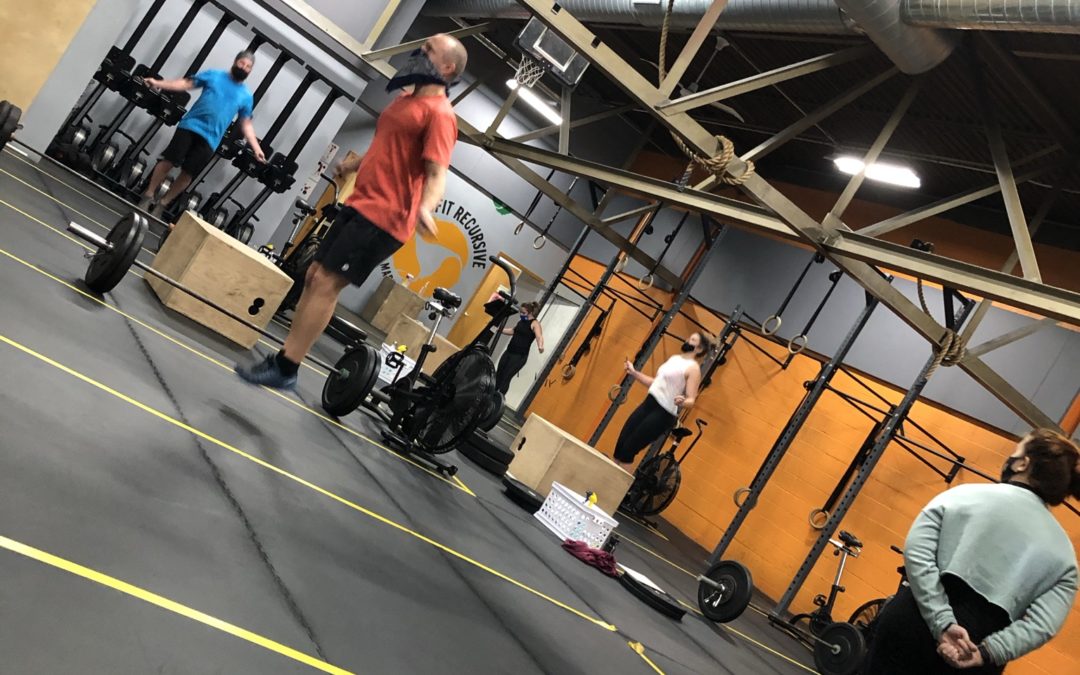I often get asked how much training, CrossFit training in particular, that an individual should be doing. I, myself, have struggled with over (and under) training over the years.
The answer, unfortunately, isn’t black and white. There isn’t a magic formula to determine how much you should be training and how hard. Trust me, I wish there was. What I can tell you is that it is a very individual thing and very dependent on your body’s ability to recover and what your personal goals are.
The goal is always (at least it should be) to train in a way that allows the athlete to recover properly and avoid injuries while still achieving overall goals. And there is a lot to all that…
First, you need to know what you are working towards. Are you trying to lose weight? Are you trying to get stronger? Are you trying to lower your cholesterol and blood pressure? Are you training for a Tough Mudder? Are you getting ready to compete? Are you off-season cross-training for a sport?
Your answer to that will matter for sure. If you are competing or have a deadline for something or an event date, that could mean you need to step up your training appropriately, short term. If you are maintaining your current weight or trying to lose weight, that may mean a schedule that isn’t as intense.
Second, you need to take a good hard look at yourself and honestly assess how your body is recovering from the workouts you are doing. Nutrition, supplements, and sleep all play a massive role in that. I want to be very clear on this point – if you aren’t sleeping well and don’t have your nutrition dialed in, you are just beating yourself up at the gym. Your body doesn’t have what it needs to recover and build muscle. Your efforts are for naught.
Your body isn’t getting stronger from wrecking yourself lifting heavy stuff in a workout for 30 minutes. Your body gets stronger at night while it is resting and repairing itself. You need to make sure you are working out hard enough so the body has stuff to repair, but also resting enough and giving it the nutrients it needs so that it can actually do the repairs. It is a very fine balance of exercise, nutrition, and rest.
Very rough guidelines would suggest 3 times a week if you are maintaining what you have, 5 times a week if you are training for something specific with a deadline. CrossFit headquarters maintains a three days on, one day off schedule. Everywhere you look, rest days are important. At the very least one day a week, most places suggest two rest days a week, especially if you are giving your all to your workouts each day!
As a side note to this, please be aware of blindly following on-line programming or some sort of programming that you do on your own or during open gym. There is a reason that so many great coaches publish their programming for free for anyone to follow – they know that it isn’t about the programming you are doing, but the feedback and coaching you are getting.
Without the intent and coaching behind it, it’s less useful. It’s not about the programming, it’s about the process. It’s about the athlete and the mental state while training. It’s about good form and technique and an appropriate amount of intensity. This can only be achieved by being coached in the present moment!
It’s also not just about spending hours at the gym. It’s the quality of every minute you are there. Are you in a class being instructed by a Coach to improve your squat? Or are you spending hours at Open Gym, checking your phone between lifts, talking to friends, or just standing around between movements? Quality over quantity is huge here! Have a very clear purpose for every minute of your time spent at the gym.
Bottom line is that frequency and intensity varies by individual. Your Coach should always be willing to sit down and talk to you about your goals, where you are at, what you are working towards, what you need to do to get there, how to scale the movements and workouts, how much and when to recover, and any nutritional and supplement advice to aid you in doing that.

